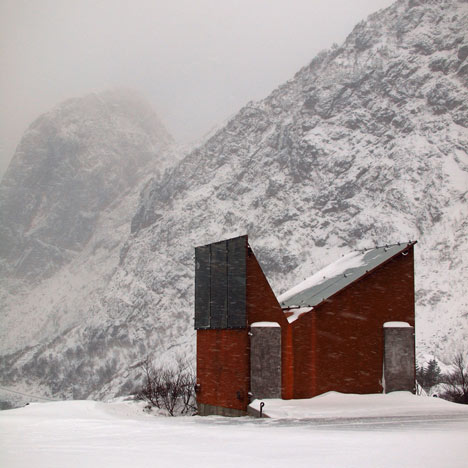
Roadside Reststop Akkarvikodden by Manthey Kula Architects
This small rusty cabin designed by Oslo architects Manthey Kula provides public toilets along one of Norway’s tourist routes.
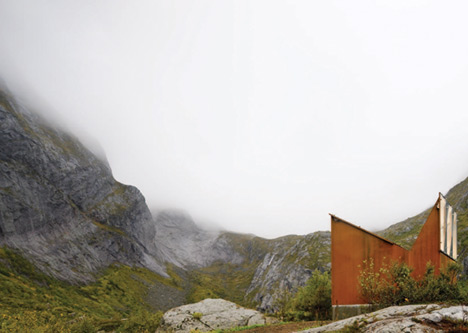
Completed in 2009, the Roadside Reststop Akkarvikodden is located north of the Artic Circle and replaces a former rest stop that was swept away in strong winds.
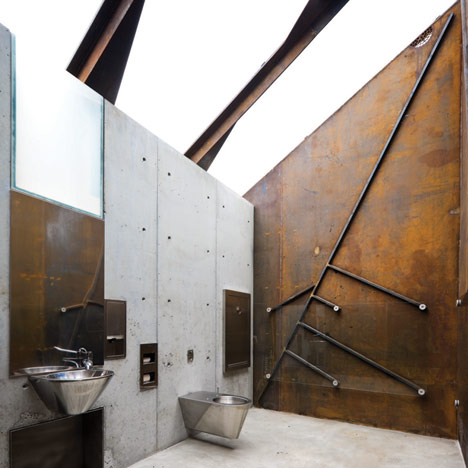
The welded Corten steel walls of the building are screened with glass on the inside to prevent rust rubbing onto the clothing of anyone using the facilities.
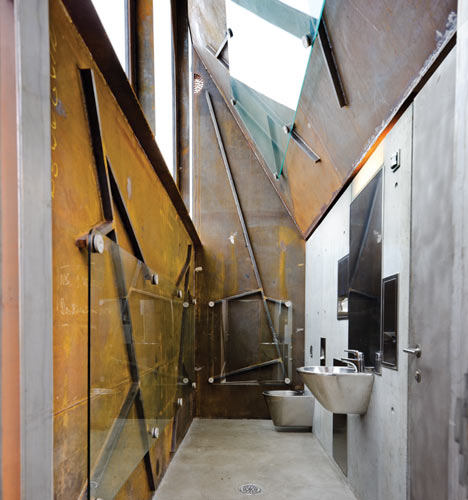
There are no windows on the walls, apparently so that visitors can have a break from the scenery.
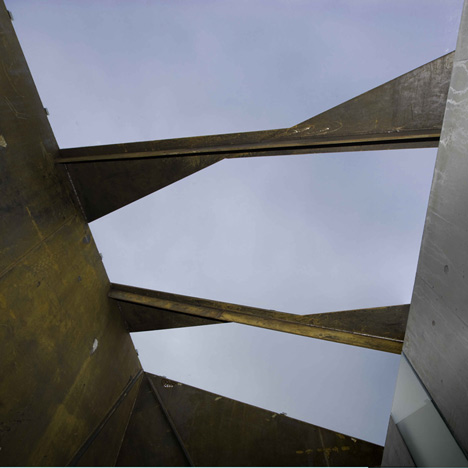
You can read about Dezeen's top ten toilets here, which includes a tree-mounted urinal.
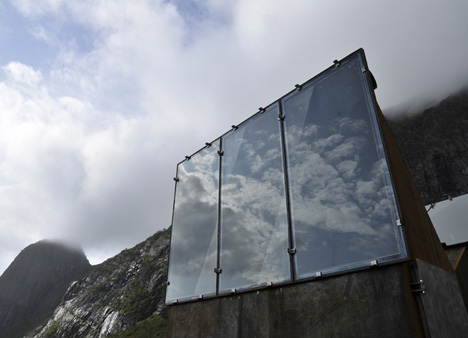
Photography is by Paul Warchol.
Here's a little more from the architects:
Roadside Reststop Akkarvikodden, Lofoten, Norway
Manthey Kula Architects
The project is situated in Lofoten, along one of the National Tourist Routes in Norway. There are eighteen such routes in Norway, all chosen for their spectacular and characteristic landscape. The facilities for the tourists that drive along these roads; such as rest stops, viewing platforms and links to local points of interest are carried out by architects and landscape architects with the purpose of offering an experience of both nature and design. By now 6 routes already have Tourist Routes status and 12 more are in the planning. The project will be finished by 2016.
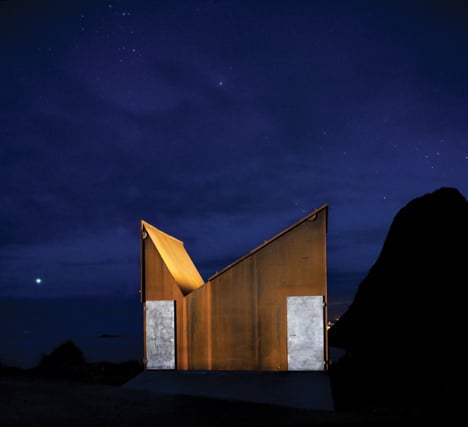
The Roadside Toilet Facility at Akkarvikodden is built in connection with existing rest stop designed by landscape architect Inge Dahlmann/Landskapsfabrikken. The commission given to Manthey Kula was to design a toilet facility that could replace an existing structure that had been lifted off its foundations by the strong winds from the Atlantic Ocean. Lofoten is located at the 67th and 68th parallels north of the Arctic Circle in North Norway. The site for the project is extraordinary. The road runs on a narrow plateau between the mountains and the sea. Were the rest stop is the plateau widens out and one experience entering a space between the mountains from where the view to the horizon is very powerful.
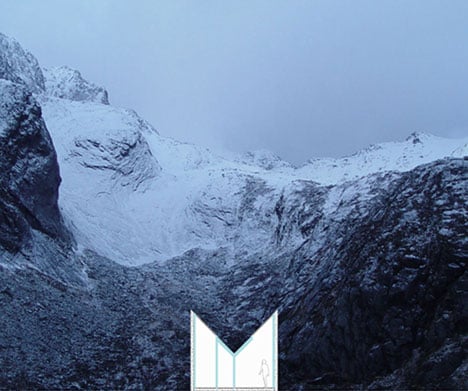
The design had two aims. One was to make the small building very heavy so it would not be lifted off ground. The other was to make interiors that shut the scenery out. The first objective was of course very pragmatic, a direct response to the history of the building’s predecessor. The other objective was more obscure. The experience of the place, mountains and sea and the ever-present coastal climate is very intense. The restrooms were conceived to present a pause from the impressions of the surrounding nature, offering an experience of different sensuous qualities.
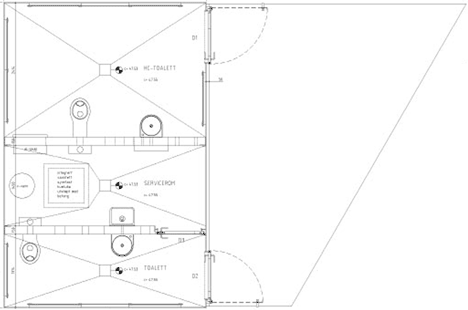
Click above for larger image
The rest room is open only during summer season thus the building did not have to be insulated. Initially it was planned in concrete. However, after having checked the work of some local mechanical industries the designed changed to a body of welded plates. The structure of the small building is not unlike the structure of a ship: welded steel plates locally reinforced with steel flanges – every part specially designed for its specific use.
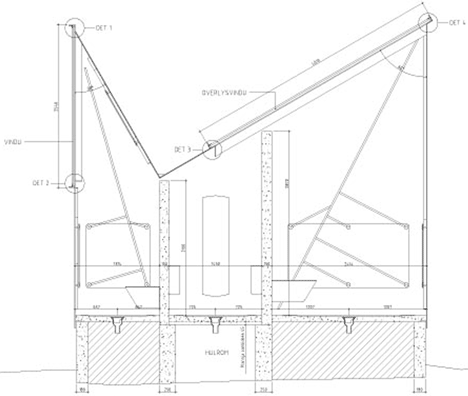
Click above for larger image
The foundation and the two walls that supports the stainless steel sanitary equipment are cast concrete. Glass panes are 12 and 20mm thick. Doors are built in 5 mm stainless steel plates. Walls and roof are made of 10mm corteen steel. To prevent rust from discoloring the clothes of the visitors parts of the walls are lined with glass panels. In the smallest rest room one glass panel is mounted in the ceiling. In this panel one can see the reflection of the horizon.